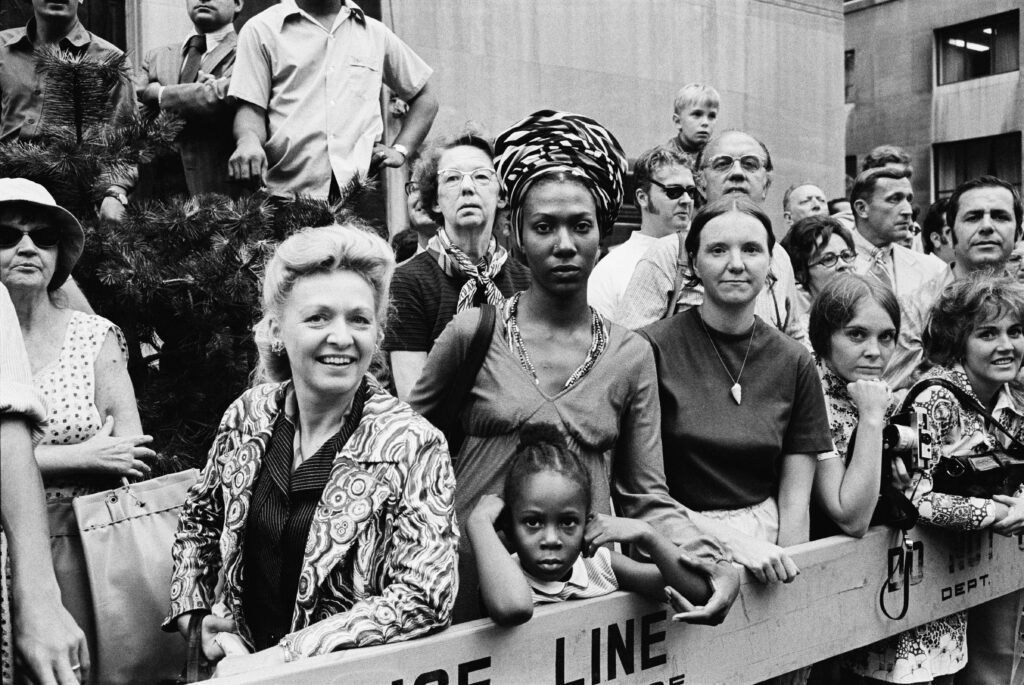The True America, Minneapolis Institute of Art

Ernest Cole came to America in 1966 in need of a new home and support to publish his book.
The 26-year-old, Black, South African photojournalist had just spent “nearly seven tense, danger-filled years” documenting Black lives under the brutal system of racial segregation known as apartheid. He risked his freedom to publish House of Bondage, which showed audiences around the world—in depth, rage, and poignant clarity—the daily indignities that Black people endured in South Africa. Now, living in exile, Cole embarked on a new project to document Black lives in America.
Starting in New York, Cole carefully attended to the rhythms and revolutionary energy of his neighborhood of Harlem and the many worlds that converge in the streets, parks, and subways of Midtown Manhattan. With support from the Ford Foundation, he traveled across the country, visiting cities during major historic events such as protests in Memphis, the funeral of Martin Luther King, Jr in Atlanta, and the aftermath of uprisings in Detroit and Washington, DC. He also recorded quieter moments focused on family life in rural areas of the South and Southwest.
While Cole centered Black people in this project, he ultimately turned his camera on a wider range of people and places as he sought to document “the true America.” Along the way, he reckoned with his preconceptions of this country as he confronted its myths and realities, its contradictions and possibilities firsthand.
Cole’s precise timeline, itinerary, and means of travel remain elusive, but The True America offers an opportunity to begin to better understand the scope of Cole’s sensitive record of American life during pivotal years of the Civil Rights struggle and his own effort to find a place for himself in this country.
Ernest Cole (born in Transvaal, South Africa, 1940; died in New York, 1990) is best known for House of Bondage, a photobook published in 1967 that chronicles the horrors of apartheid. After fleeing South Africa in 1966, he became a “banned person,” settling in New York. He was associated with Magnum Photos and received funding from the Ford Foundation to undertake a project looking at Black communities and cultures in the United States. Cole spent an extensive time in Sweden and became involved with the Tiofoto collective. He died at age forty-nine of cancer. In 2017, more than 60,000 of Cole’s negatives—missing for more than forty years—resurfaced in Sweden.
Leslie M. Wilson is Associate Director for Academic Engagement and Research at the Art Institute of Chicago. Her research, teaching, and curatorial endeavors focus on the history of photography, the arts of Africa and the African diaspora, modern and contemporary American art, and museum studies. Her current and forthcoming projects include not all realisms: photography, Africa, and the long 1960s at the University of Chicago’s Smart Museum of Art where she was a curatorial fellow from 2019 to 2021, and David Goldblatt: No ulterior motive at the Art Institute of Chicago with co-curators Matthew Witkovsky (AIC) and Judy Ditner (Yale). She has recently written for publications including Dear Dave, FOAM Magazine, and Manual, and interviewed Larry W. Cook for Weiss Berlin. From 2017-2021, she was Assistant Professor of Art History at Purchase College, SUNY. She holds a PhD in Art History from the University of Chicago and a BA in International Relations from Wellesley College.
Organized by Aperture and the Ernest Cole Family Trust. Curated by Leslie M. Wilson, PhD. This exhibition is made possible, in part, with generous support from the Ford Foundation and the National Endowment for the Arts. All images © Ernest Cole Family Trust.
Image credit: Ernest Cole, Midtown, c. 1970–1972. Courtesy the Ernest Cole Family Trust
You may also like
Minneapolis Institute of Art
2400 3rd Ave S.
Minneapolis, MN 55404
Learn more to host this exhibition.














